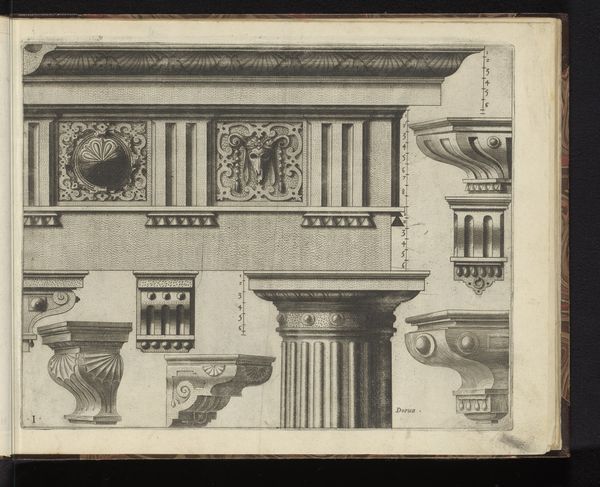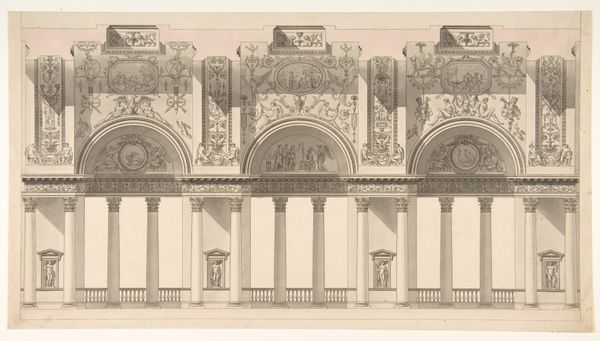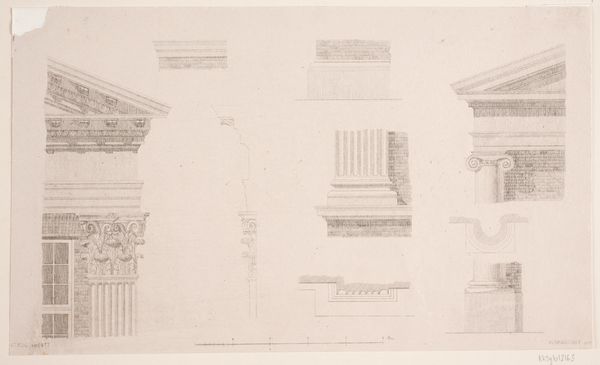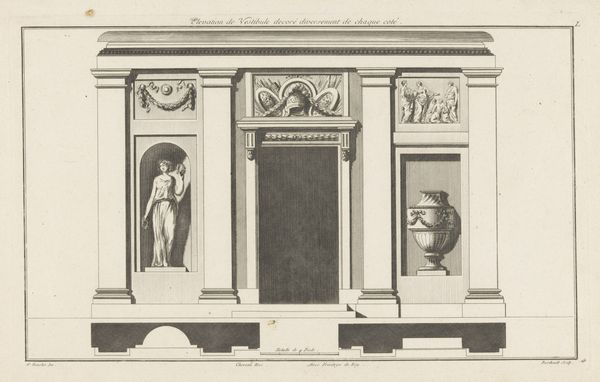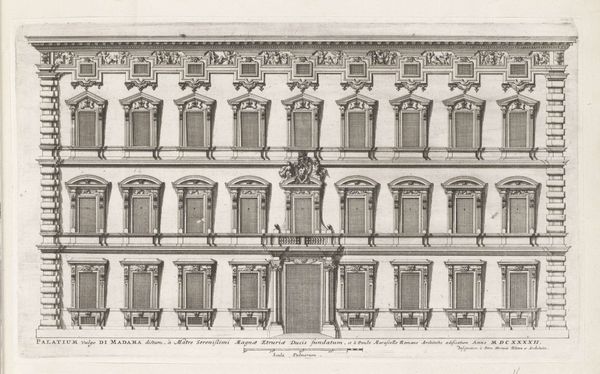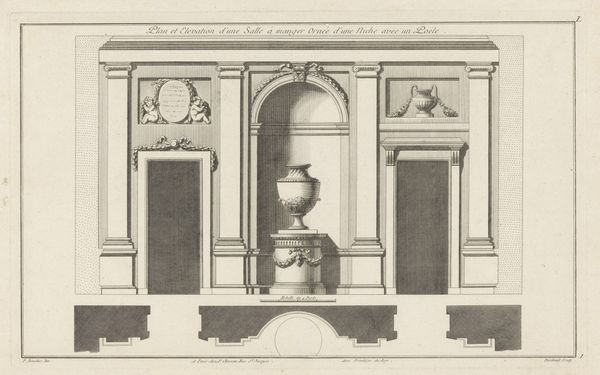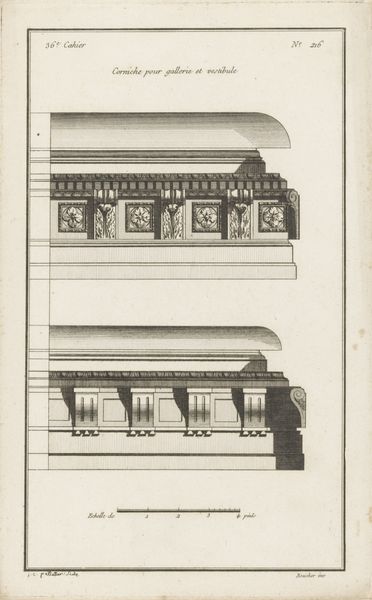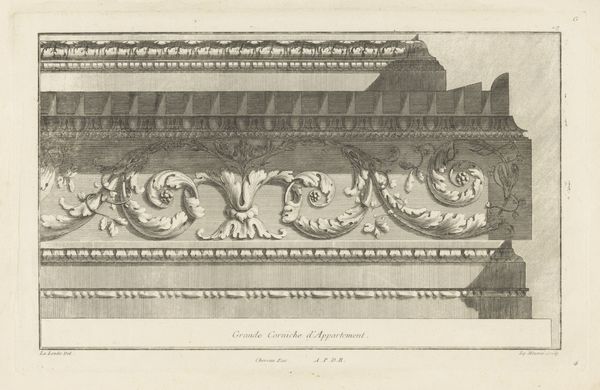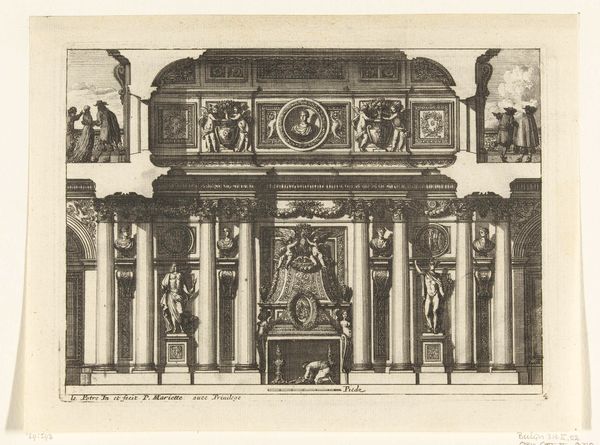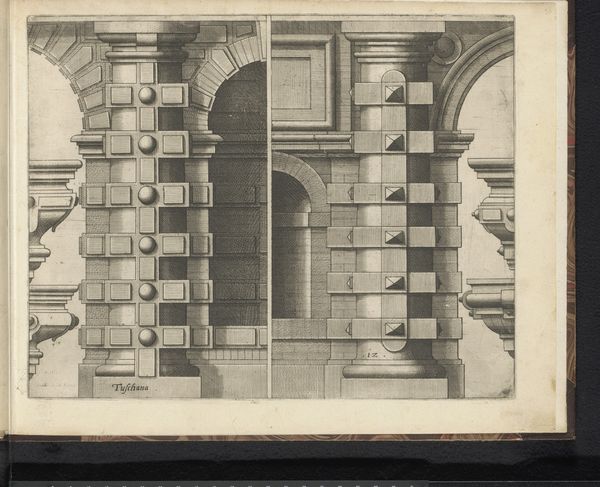
drawing, print, engraving, architecture
#
drawing
#
baroque
# print
#
geometric
#
classicism
#
line
#
history-painting
#
academic-art
#
engraving
#
architecture
Dimensions: height 235 mm, width 448 mm
Copyright: Rijks Museum: Open Domain
Editor: This engraving, titled "Entablementen en kapitelen," is dated 1729 and is currently held at the Rijksmuseum. I understand it is a study of classical architectural elements, rendered in print and drawing. It is incredibly precise and analytical. What aspects of this piece strike you as most significant? Curator: Note the precision in line, delineating forms not to represent but to dissect. Consider the arrangement: observe the systematic ordering of the architectural fragments, emphasizing a focus on structure. We are given an almost scientific presentation of elements, reducing them to components. Editor: So, less about the grandness of architecture and more about understanding its individual parts? Curator: Precisely. Notice the dedication to the anatomy of classical forms, each meticulously measured and labeled. There is no narrative, no context beyond the purely structural. Observe the subtle variations in line weight used to describe the forms; do you perceive any inherent hierarchy or emphasis placed on specific elements? Editor: I see how certain details, like the volutes and acanthus leaves, receive more intricate linework than, say, the shafts of the columns. Perhaps the artist is subtly directing our attention to the more decorative aspects? Curator: A keen observation. It suggests a potential interplay between function and ornamentation, a dialogue expressed solely through visual syntax. The medium of engraving itself contributes to this sense of order and precision. Editor: It’s fascinating how a seemingly straightforward depiction can reveal so much about the artist's, and perhaps even the era's, understanding of structure and beauty. Curator: Indeed, by isolating and analyzing these classical components, the print encourages us to reconsider their formal relationships, divorced from any specific architectural context.
Comments
No comments
Be the first to comment and join the conversation on the ultimate creative platform.
